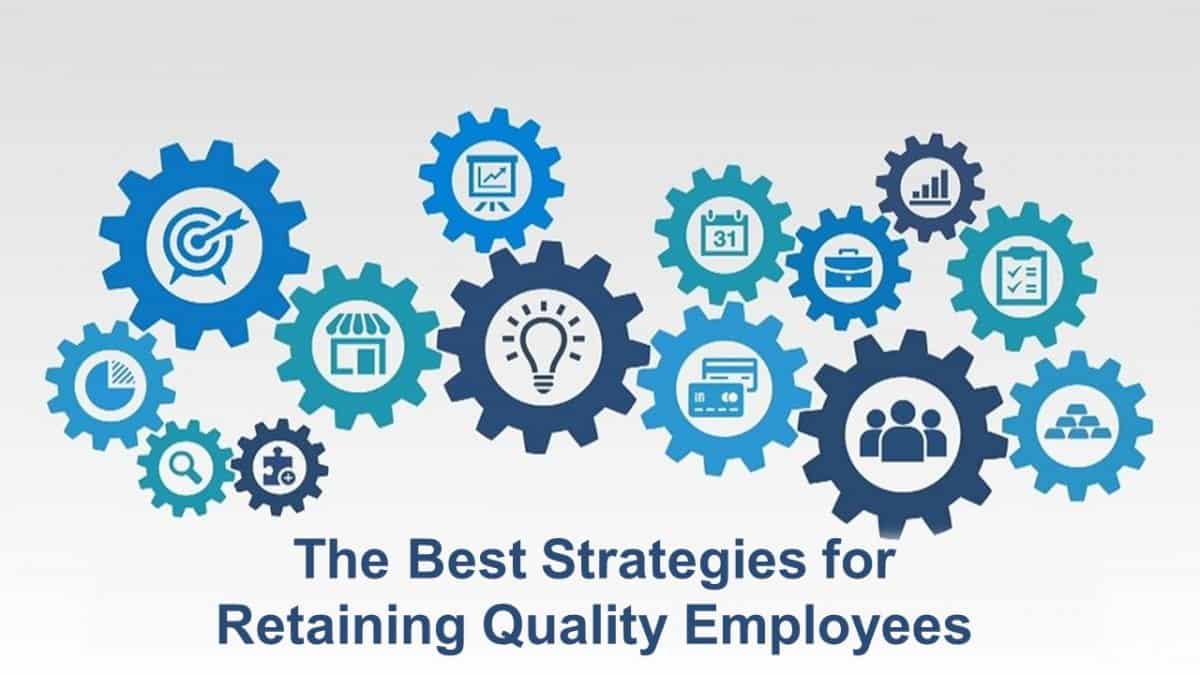Share:
Ciara Ungar, Contributor

Often, leaders believe providing the best of the best health benefits for their employees and their furry friends is enough for attracting good talent and retaining it.
In fact, if you search for strategies to retain talent, much of what comes up is a human resources playbook of what benefits to offer and how to keep employees engaged with attractive programs.
If these tactics were enough, though, we wouldn’t be witnessing The Great Resignation.
While having benefits that serve an employee’s basic needs to ease life’s burdens is without a doubt a valuable element for attracting quality talent, it’s equally important to pursue strategies that create an environment that supports employees on a deeper level.
Where I see companies often get confused or misguided in their pursuit is when they focus on treating the symptoms, rather than addressing the underlying issues that create the cracks.
Companies know that demonstrating empathy and understanding at every turn, giving their employees a safe space to be human, leads to higher retention.
The best strategies for retaining quality employees are cultivating authenticity, creating an agile environment, and fostering trust on a daily basis. These strategies are rooted in fundamental human psychology and balance the needs of the organization’s bottom line with the needs of employees.
To foster motivation and trust—which are fundamental to creating loyalty and fulfillment—requires leaders to shift their focus from prioritizing offering the shiniest benefits to reprogramming the soul of the day-to-day organization.
In this article, we will examine the underlying forces that drive people to stay with a company through the lens of strategies for retaining quality employees, which make the more obvious and traditional tactics actually work.


Starting with the E Word – Empathy
If you search for strategies to retain quality talent, most modern articles talk about culture and empathy.
The “E” word has become mainstream and consequently widely misunderstood and misused. It’s this reality that drove me to write Leadership Lessons from a Team Captain, and unpack what empathy truly looks like in an organization.
Taking a page out of WeForum, we see a common understanding of what corporate empathy typically means:
“Corporate empathy demonstrates the strength of both the individual and the organization. Leaders with empathy are better at connecting with and supporting their employees, ultimately leading to better results. Corporate empathy is a proven key to boosting workforce engagement and talent retention, which in turn produce better business results. What could be stronger than that?”
The truth is, empathy has become a catch-all word for what companies should demonstrate. It’s become something that means posting about cultural events in support or allowing employees to take a PTO day when needed.
While empathy is absolutely necessary for any company if they wish to retain talent, it’s also not synonymous with giving people a flex PTO day.
The foundation of retaining employees is empathy, and the foundation of empathy is stepping outside of your own understanding and listening to that of others.
If this is the empathy companies would demonstrate, they would see that more benefits and more engagement programs are not what their employees are looking for.
What employees are looking for is a space where they can be human without the fear of losing their job when they’re already living paycheck to paycheck because of having to pay for the benefits your company offers.
Indeed, what they’re looking for is more fundamental than that. Natural to our human instinct is the desire to be accepted and understood—this is what they want to see from their companies.
EY fortifies this point:
“But what does empathy actually mean? For workers, it ultimately comes down to whether or not they feel their needs—both personal and professional—are being listened to, understood, and accommodated by their organization’s leadership.”
Demonstrating empathy, then, is about implementing strategies that foster acceptance, understanding, and proactive emotional support for the human and creating a space for these strategies to live and breathe (more on this below).
These strategies are the ones that should be focused on with leadership paving the way and leading by example.
What happens in every vein of the company flows through the head and it requires reprogramming of how leaders view and understand the notion of empathy in the workplace and how to build a culture of human understanding.
Backed by the One-on-One Game
You’ve likely heard the saying, “People don’t quit jobs, they quit managers.”
We all have an arsenal of stories to share about a manager who made us hate our job, feel inadequate, yelled at us, or (fill in the blank). Indeed, one of the biggest contributors to employee retention is management and leadership, but we’d be short-sighted to simply leave it at a surface-level interpretation.
John C. Maxwell says, “People buy into the leader before they buy into the vision.”
This is a critical reminder that encouraging engagement, retention, loyalty, and any other goal that supports your company’s vision must start with building true leaders that people believe in first.
But, belief doesn’t come with titles, 1:1 weekly meetings, or recognition. It comes with a mix of purpose, values, and servanthood. Allow me to elaborate…
It’s increasingly recognized that companies face the challenge of managers being promoted without mastering or being taught leadership skills. The impacts of this are devastating (hence, The Great Resignation).
Typically, when companies focus on developing managers, they often focus on upskilling technical and soft skills rather than reprogramming the heart-set and mindset.
The harsh truth is you can have talented, driven, motivated employees, but if they’re working with a manager who lacks true leadership and a superb one-on-one game, your top talent will leave quicker than you can see it coming.
The notion of the one-on-one game is an analogy I use to discuss the importance of developing these skills in managers, borrowed from the observation of great team captains in history.
In Leadership Lessons from a Team Captain, I discuss Kobe Bryant’s one-on-one game—not as his ability to manage a team and its output, but as his ability to understand each team member intimately and motivate them to perform their best.
The idea, then, is that if we want retention strategies to work, we must address an underlying force of leadership that comes from building a strong one-on-one game.
In the case of Kobe Bryant, he understood that telling his teammates what to do would never work. Talking AT others doesn’t break through years of psychological barriers and overwhelming daily stress that are unique to each team member.
He spent one-on-one time with them to understand their motivators and drivers, how they receive feedback, and what their past and home life were like. Bryant understood that everyone’s unique life circumstances meant they needed to learn and be motivated in different ways that felt safe for them.
As a practical application for business leaders, one of the first strategies to retain employees is to develop leadership teams who view each employee uniquely and seek to understand their underlying motivators and challenges.
Leaders can then develop strategies to communicate and connect with employees one-on-one to create a safe space for understanding.
Strategies for Retaining Employees
Creating a culture that people willingly seek to engage in, advocate for, and grow within goes beyond fun outings and good benefits. It is one that builds trust through creating an environment where employees can be human and feel understood.
While some resources cite the hiring process, hybrid options, supporting employee well-being, and other tactics as fool-proof strategies to retain employees, they fall short when trust, emotional safety, and a sense of being understood as an individual are not present.
To retain employees, there are several underlying areas leaders should focus on reprogramming, building on a foundation of empathy and one-on-one leadership:
Strategy: Cultivate Authenticity
Authenticity is yet another buzzword, akin to empathy, that is grossly misunderstood in today’s business landscape.
Increasingly, we see the expectation of authenticity from consumers and employees alike, but companies continue to fall short – in some cases due to lack of effort, in most cases due to lack of understanding.
Authenticity in the context of companies and leadership is often described as bringing your true self to the office. In the marketing world, the authenticity of brands is often described as businesses that show up without feeling like robots and pre-scheduled content.
These are all very true manifestations of authenticity, but they don’t drive employee retention.
Authenticity, as I’m suggesting in this context, is more deeply rooted. In simple terms, it’s about ‘walking the talk.’
A cousin of integrity, authenticity is about aligning actions, day in and day out, with your heart set and your mindset—what I like to refer to in my work as your attributes, behaviors, and skills.
Too often, companies establish policies and benefits, make posts on social media about their values, and even offer training and programs that reinforce their positions around such topics as diversity, equity and inclusion, empathy, work-life balance, and other mainstream topics employees are talking about.
All of this is a start but does not reflect the day-to-day moments that employees experience in one-on-one interactions.
As a practical example:
There’s a story of a company that positions itself as an empathy-based organization and has been one of the later adopters of formal programming around DE&I commitments. Although respectable in many ways, the time came to ‘walk the talk.’ A report was shared on Slack with the company, highlighting its diverse hiring statistics to further the initiative. This was great in intention, perhaps, although the delivery of the stats felt tone def to some. When feedback was offered by a person of color, a partner in the company responded with: ‘we can’t help people who can’t tell the forest from the trees.’
In this case, we’re seeing a common situation where leadership is racing to catch up to the cultural climate and meet the expectations of the industry and employees, and when a mistake is made they feel like their effort was yet still criticized and become defensive. As a company that positions itself as an empathy-based organization, it falls short when the opportunity arises to demonstrate that empathy, pause, and listen to understand. It would seem, then, there’s a question of authenticity: do they really care about creating a better future, or are they simply doing what they feel is expected of them?


Authenticity, then, is not about being perfect or even simply showing up as your true self as some articles would reduce it to. As a business, it’s about doing behind closed doors what you build a perception of to outsiders.
An argument could be made that if we’re talking about authenticity and in the same breath forcing leaders to walk the talk behind closed doors, even when they don’t totally align or are still learning to grow into that perspective, it is inauthentic.
That’s where my work on Attributes, Behaviors, and Skills comes into play. The idea is that we must reprogram from the inside out to show up more authentically. An equilibrium shift within ourselves must happen if we wish for external change to be in alignment.
This requires stepping out of our own understanding – it requires empathy.
As leaders, it is only when we can show up authentically in every moment that we create a space where employees feel they can trust our intentions and mindset. This is a critical element to retaining employees.
As leaders, if we don’t reprogram our mindset and our heartset (our Attributes), then our Behaviors will fall short and often create friction, often felt by those around us.
The inauthenticity of the actions matching our motivations will and can be easily felt by those throughout the company, particularly when tested in day-to-day moments.
Strategy: Create an Agile Environment
Agility is most often discussed in the context of product development or project management.
If I had a penny for every time I’ve heard the value proposition “we are agile,” I would own my own yacht. What that means for a company in terms of employee retention, however, is a bit different.
Simon Sinek discusses this in the context of the circle of trust:

Sinek reminds us that on any given day there are external forces working against us as individuals. He offers the example of an employee not performing their best and depicts the contrasting experience of fearing losing their job vs feeling supported.
The focus of Sinek’s anecdote is to convey that it is important that we are human first as business leaders, even in the case of employee performance.
Employees must feel psychological safety if we wish for them to perform their best and stay loyal. An environment of fear that one will lose their job if they are underperforming has the countereffect.
Sinek offers the example of an employee not hitting their quarterly sales targets, but what about everyday, more mundane moments?
An employee who may seem less organized, less responsive to email, less responsive on Slack, or perhaps needs a few more personal days than usual.
Could this be because they’re overwhelmed with a personal situation at home? Are they experiencing a cognitive disability that they’re navigating?
Companies expect employees to show up as if they do not have these external forces at play, without exception in most cases. If they didn’t check a disability box on the employment agreement, they have no room for error.
Agility, in this context, is about creating an environment that can shift with these employee needs.
If an employee is having difficulty fulfilling a role, agility means understanding why this may be and finding a different, more suitable role that can harness their strengths in more adaptable ways.
In doing so, leaders build trust. Employees begin to feel safe, which not only means they’ll perform better, but they’ll also foster a connection that drives them to stay with your company through ups and downs.
Strategy: Foster Trust
By now you’ll have noticed that underpinning each of these strategies is the need to build trust. To create a space where people feel safe and understood is to create a space where trust is fostered in every moment.
Harvard Business Review refers to the triangle of trust, in which you’ll see a familiar theme emerge:
“People tend to trust you when they believe they are interacting with the real you (authenticity), when they have faith in your judgment and competence (logic), and when they feel that you care about them (empathy)”
Outside the walls of the company, we can be our best selves with a partner, a friend, or a family member when we feel we can trust them. However, for some reason, this logic and understanding of human nature seems to stop at the door of a business.
Trust is why we stay with our spouse. It is why we feel safe in our friend groups. It is at the heart of motivation, inspiration, and belonging, all of which are necessary components for employee retention.
The topic of trust in employee retention is only just now becoming mainstream.
Previously thought of as more of a “warm and fuzzy” discussion that has no place in business, data and advocates are shedding light on just how valuable a role it plays in supporting the bottom line.
SHRM’s recent article discusses the growing evidence in support of trust, catapulted by the pandemic:
“In order to gain trust, you should give people as much stability as possible… organizations “move at the speed of trust”… having a workplace built on trust can lead to quicker decisions and better collaboration… Efficiency and productivity depend on the trust of teammates…”
The friction occurs when leaders believe trust is merely about being honest.
In fact, trust is cultivated in small moments more than it is in the obvious truth-telling settings. It’s the play-by-play micro-moments of our days that build trust, which ultimately impacts every aspect of employee performance and connection with a company.
Giving trust, transparent communication, appreciation, integrity, and other behaviors throughout every interaction fosters the trust that makes the engine run—it makes the benefits and “bring your dog to work” days worth it.
The New Role of Business
In this article, we’ve only grazed the surface of strategies for retaining employees.
The goal of this discussion is to highlight that there are countless articles on employee retention strategies that offer programs, flexibility, and business models that claim to drive greater retention.
These fall short when they’re not in alignment with how leadership shows up, as evidenced by The Great Resignation. Starting with reprogramming the soul of leadership and the organization is only the way to make those strategies work.
Before we go, I want to address a response I often hear from frustrated leaders:
“Why is it the role of the company to meet personal needs in order to get them to stay? We provide benefits, we give them a job. We aren’t their parents.”
Years ago, personal life stayed at home, employees reported to work from 9-5, and then they went home. This was an engine that worked seemingly fine.
Why, then, are businesses now required to take more of an active role in taking care of their employees when “It’s not our job?”
It is true that traditional understandings of business advocate that work and personal life should remain separate. It’s also a mindset rooted in a time that predates today’s technologies and cultural climate.
We are not the same human species we were 50 years ago. We are inundated with information, technology, and human experiences that make us more complex, in tune with our environment, and more influenced by our daily experiences inside and out.
With the expectation that employees are more involved in their jobs (always on and ever more productive) comes the need for employers to recognize these basic human psychological facts and find new strategies and ways of understanding the role of businesses to best support the whole human.

Ciara Ungar is a New York City-based Author on Leadership, Certified Business & Leadership Coach & Consultant, an Award-Winning Strategist, and an International Speaker. She is also an Innovation Women Speaker, Instructor with Columbia University Immersion Programs, a Mass Challenge Advisor, a Startup Council, and Forbes Coaches Council member. She has a blended academic background with degrees and certifications in Communication, Psychology, Integrated Strategy, Entrepreneurship & Business Strategy, and Cultural Diversity from Purdue University, Georgetown University, and Wharton Business School. She applies her robust 16 years of professional expertise working with Fortune500 companies, high potential startups, top global agencies, and Angel/VC Investors to entrepreneurship, leadership development, business strategy, and professional growth. A disciple of “Start With Why,” her purpose is to guide others through transformative thinking as they build businesses, teams, and personal purpose that inspires change.


